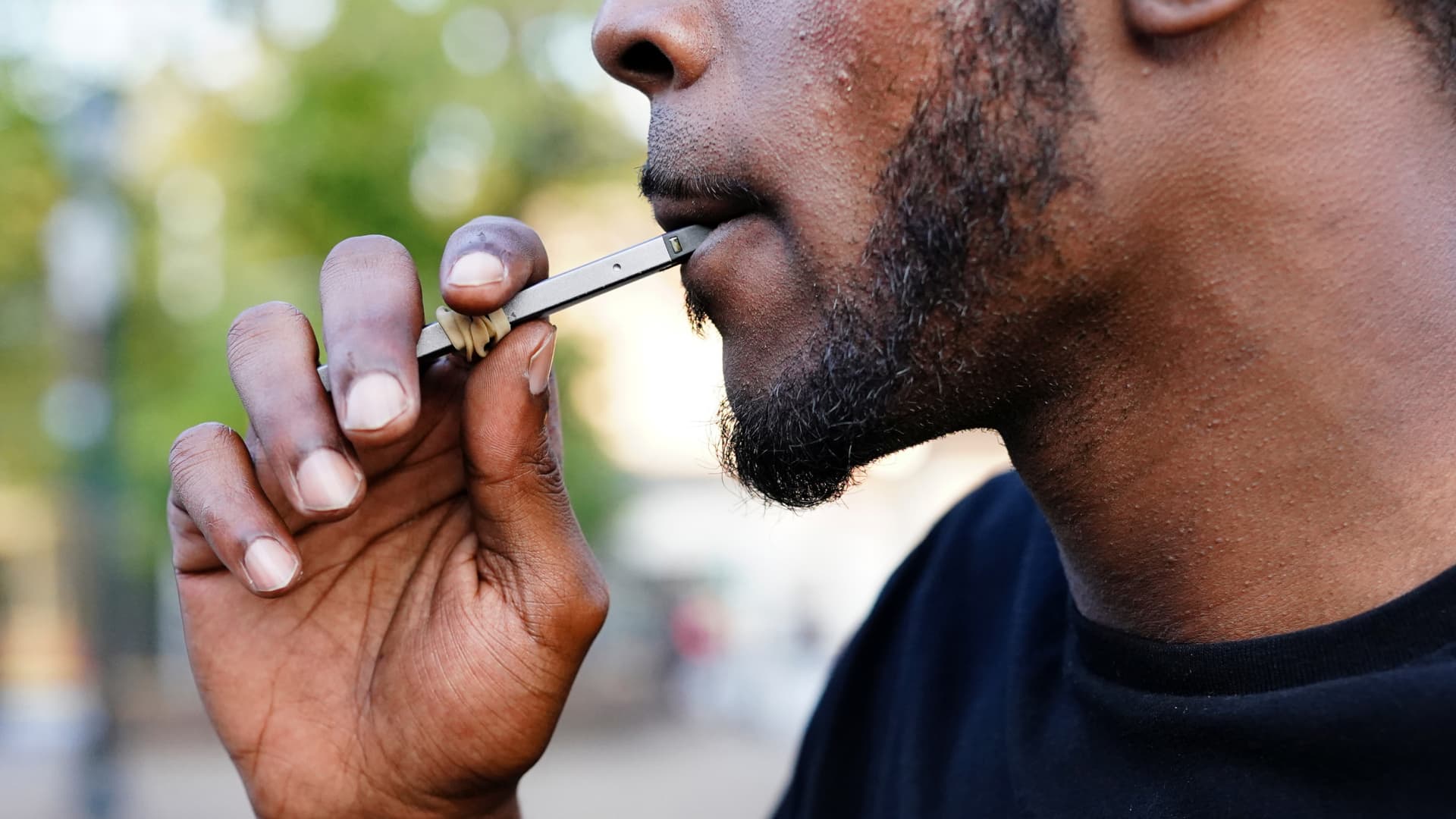Young people are at risk of experiencing significant respiratory symptoms, including bronchitis and shortness of breath, after just 30 days of electronic cigarette use, according to a new study released Tuesday.
Researchers from the Center for Tobacco Research at The Ohio State University Comprehensive Cancer Center and the Southern California Keck School of Medicine used four years of data from online surveys to examine the health impact of e-cigarettes — which create a vapor containing nicotine and other harmful substances — on teens and young adults.
They said the study, partly funded by the National Institutes of Health, contributes to existing evidence that e-cigarette use is associated with an increased risk of respiratory symptoms. Drug regulators should consider the findings and work to minimize the negative health impact of e-cigarette use on young people, the researchers added.
E-cigarettes have hooked a new generation on nicotine in less than a decade, putting the health of millions of children, teens and young adults at risk while threatening years of progress in reducing youth tobacco use.
E-cigarette usage is now substantially higher among youths and young adults than it is among adults overall in the U.S., according to the Centers for Disease Control and Prevention. Sales of e-cigarettes jumped nearly 50% during the first two years of the Covid pandemic, mainly driven by disposable products in sweet and fruity flavors that have long been popular among teens.
That surge in sales came despite a federal crackdown that placed more restrictions on the marketing and flavors of tobacco products.
Manufacturers are still flooding the market with thousands of addictive products that are often sold illegally. Brands such as Puff Bar, Elf Bar and Breeze Smoke are not approved by the Food and Drug Administration, and some have surpassed vaping pioneer Juul in popularity.
“An important point for consumers is just that e-cigarettes are not risk-free,” Alayna Tackett, a pediatric psychologist and researcher at the Center for Tobacco Research. “We absolutely want to eliminate the initiation and use of e-cigarettes among young people. I think that’s a critical public health goal.”
She noted that the study examines only teens and young adults, and that in the demographic of all adults, people “often switch from using cigarettes to using e-cigarettes with likely fewer risks.”
“I think we need to be thoughtful about policies to protect those young people, while also supporting adults who are interested in choosing a potentially less harmful alternative to cigarettes,” Tackett added.
What does the data say?
Researchers followed more than 2,000 young people with an average age of 17.3 years from the Southern California Children’s Health Study.
In 2014, they asked the participants to complete an online survey about their respiratory symptoms and e-cigarette, traditional cigarette and cannabis use. Around 23% of participants reported a history of asthma at the time of the initial survey.
Researchers collected follow-up data from the majority of those participants during three additional survey waves, in 2015, 2017 and 2018.
Participants were specifically asked if they had ever used each of the three products. If they indicated yes, they were asked about the number of days they had used a product in the past 30-day period.
Those who had never tried a product were classified as “never users,” while participants who had used a product on at least one of the past 30 days were classified as “past 30-day” users.
Past 30-day e-cigarette users were at an 81% higher risk of experiencing a symptom called wheeze than never users after accounting for survey wave, age, sex, race and parental education. Wheeze was defined as wheezing or whistling in the chest in the previous 12 months.
Past 30-day users were also at a 78% increased risk of experiencing shortness of breath and a 50% higher risk of experiencing symptoms of bronchitis, an infection of the main lung airways that causes them to become irritated and inflamed.
The link between e-cigarette use and respiratory symptoms was slightly weaker when researchers accounted for two factors: co-use of e-cigarettes with traditional cigarettes or cannabis, and secondhand exposure to any of the three products.
For example, past 30-day e-cigarette users were at a 41% higher risk of experiencing wheeze than never users if they also used traditional cigarettes or cannabis at the same time or experienced secondhand exposure to any of the products.
“Wheeze was no longer significantly related to the respiratory symptoms associated with e-cigarette use when we controlled for co-use of cigarettes and cannabis,” Tackett said. But she noted that bronchitis symptoms and shortness of breath remained significant.
The link between e-cigarette use and respiratory symptoms was persistent in a sub-analysis that excluded participants with a history of asthma. That indicates that the negative health effects of e-cigarette use were present in all participants, not just those with asthma, according to the study.
Tackett noted that there are limitations to the study that future research could address.
Additional studies could more objectively measure respiratory symptoms and product use instead of using surveys that participants filled out themselves, according to Tackett.
She added that future studies, including one she’s currently working on, could further assess the “complex relationship” between the use of e-cigarettes and traditional cigarettes or cannabis.
— CNBC’s Stefan Sykes contributed to this report.
